Affiliate links on Android Authority may earn us a commission. Learn more.
Samsung Galaxy S22 Plus vs Google Pixel 6 Pro: Which is the better buy in 2023?



Getting an older-generation high-end handset is a great way to get a great smartphone experience without breaking the bank. Google’s Pixel 6 Pro was among our favorite phones from 2021, and with good reason. Its ability to consistently deliver excellent camera quality, battery life, and performance in a radical new design made it stand out. But how does it stack up to the Samsung Galaxy S22 series? In this comparison, we will look at the Galaxy S22 Plus vs Pixel 6 Pro to help you determine which of these phones is the best fit for you.
Samsung Galaxy S22 Plus vs Google Pixel 6 Pro: Design and display
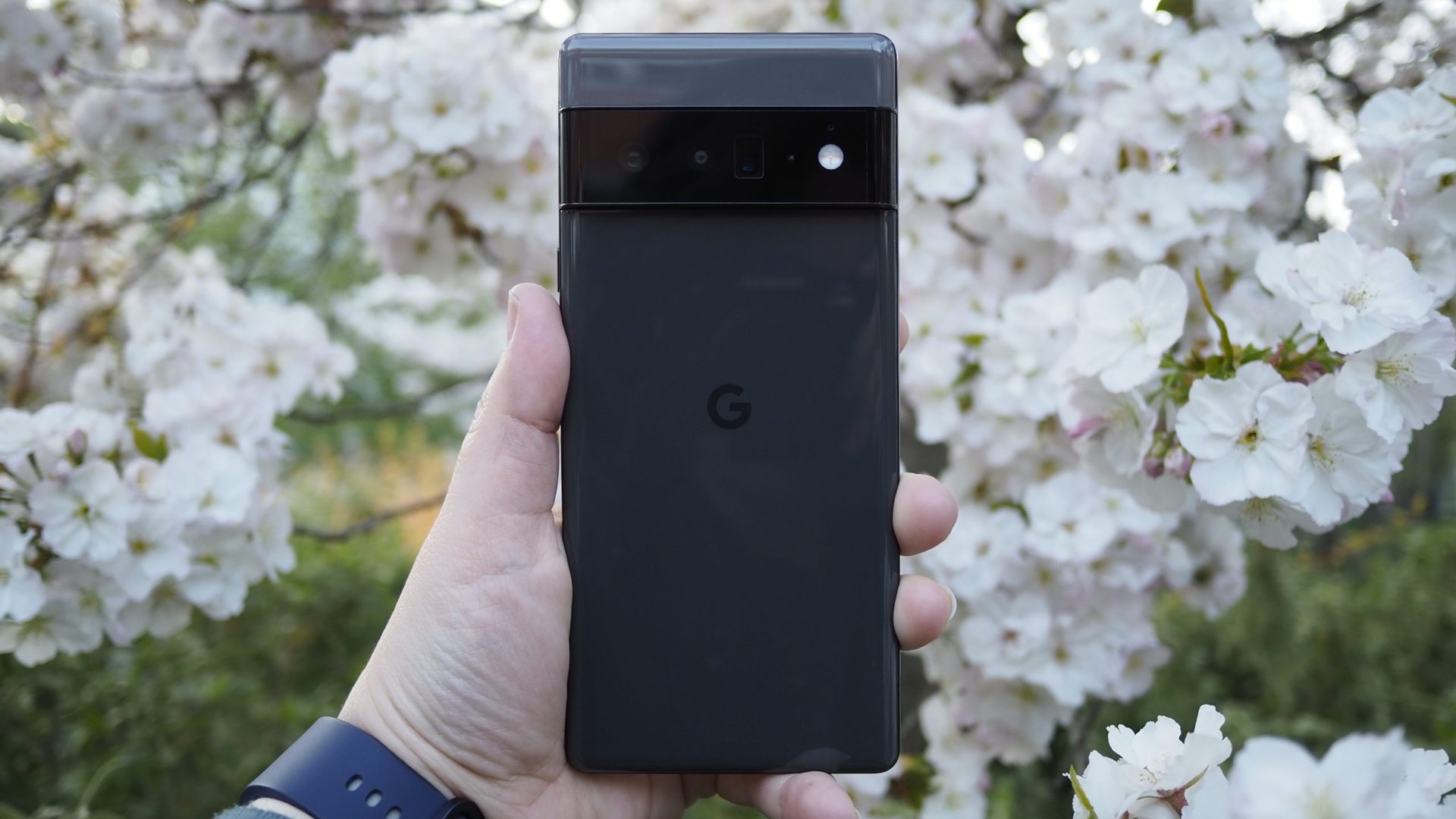
The flagships from Samsung and Google offer two completely different approaches to design. While Google presented a brand-new design with its Pixel 6 Pro, the Galaxy S22 Plus feels like a more refined version of the Galaxy S21 Plus. Samsung flattened out the back glass and sides but kept the contoured camera bump for another year, making the Galaxy S22 Plus feel premium and chic. On the Pixel side, Google introduced a camera bar that spans the entire width of the phone. Compared to the S22 Plus, the camera bump on the Pixel 6 Pro is significantly bigger, but the phone wobbles less when typing on a table.
Concerning colors, both devices again have radically different approaches. Samsung offers the S22 Plus in satin finishes of Phantom White, Phantom Black, Green, Pink Gold, and Samsung-exclusive colors of Graphite, Cream, Sky Blue, and Violet. The Pixel 6 Pro comes in Stormy Black, Cloudy White, and Sorta Sunny. Both devices and their finishes look great in their own regard, but Samsung has the edge in terms of options and finish. The Pixel’s glossy back and large camera bump attract a lot of fingerprints and dust very quickly.
Samsung and Google both know how to build exceptional looking handsets.
Once you move around to the front of each device, you’ll find that the Pixel 6 Pro and Galaxy S22 Plus are similar but have a few key differences. Both have expansive AMOLED displays with centrally mounted punch hole cameras. The Galaxy S22 Plus’ screen is slightly smaller at 6.6 inches, with the Pixel 6 Pro coming in at 6.7 inches.
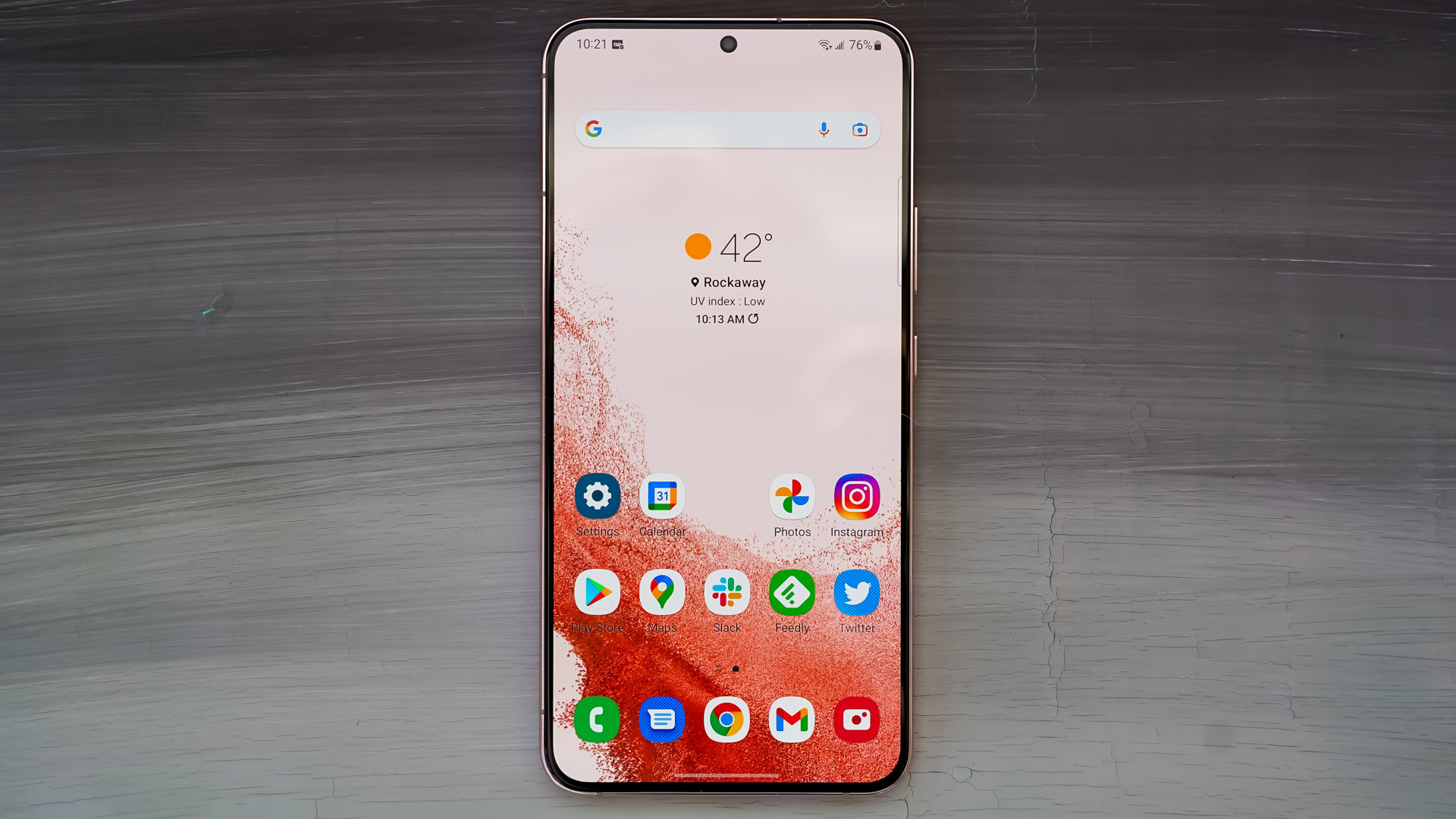
Both phones support adaptive refresh rates up to 120Hz, but in terms of resolution, the Pixel 6 Pro offers a sharper QHD display at 3,120 x 1,440 compared to the Galaxy S22 Plus’ FHD+ panel of 2,340 x 1,080. The Pixel 6 Pro’s display is curved, while the S22 Plus has a flat panel. In usage, both screens look incredible, and the Pixel’s curved panel isn’t as disruptive or annoying as other curved-screen phones. However, the flat panel of the Samsung Galaxy S22 Plus looks a lot cleaner with its tightly uniform bezels.
Both devices are well-built and undoubtedly feel like flagship phones. The Galaxy S22 Plus’ design is a refinement of last year’s well-received S21 series, and it’s certainly a phone built with beauty in mind. The Pixel 6 Pro, on the other hand, is a statement piece that wants to announce its presence more than most other phones.
Hardware and cameras
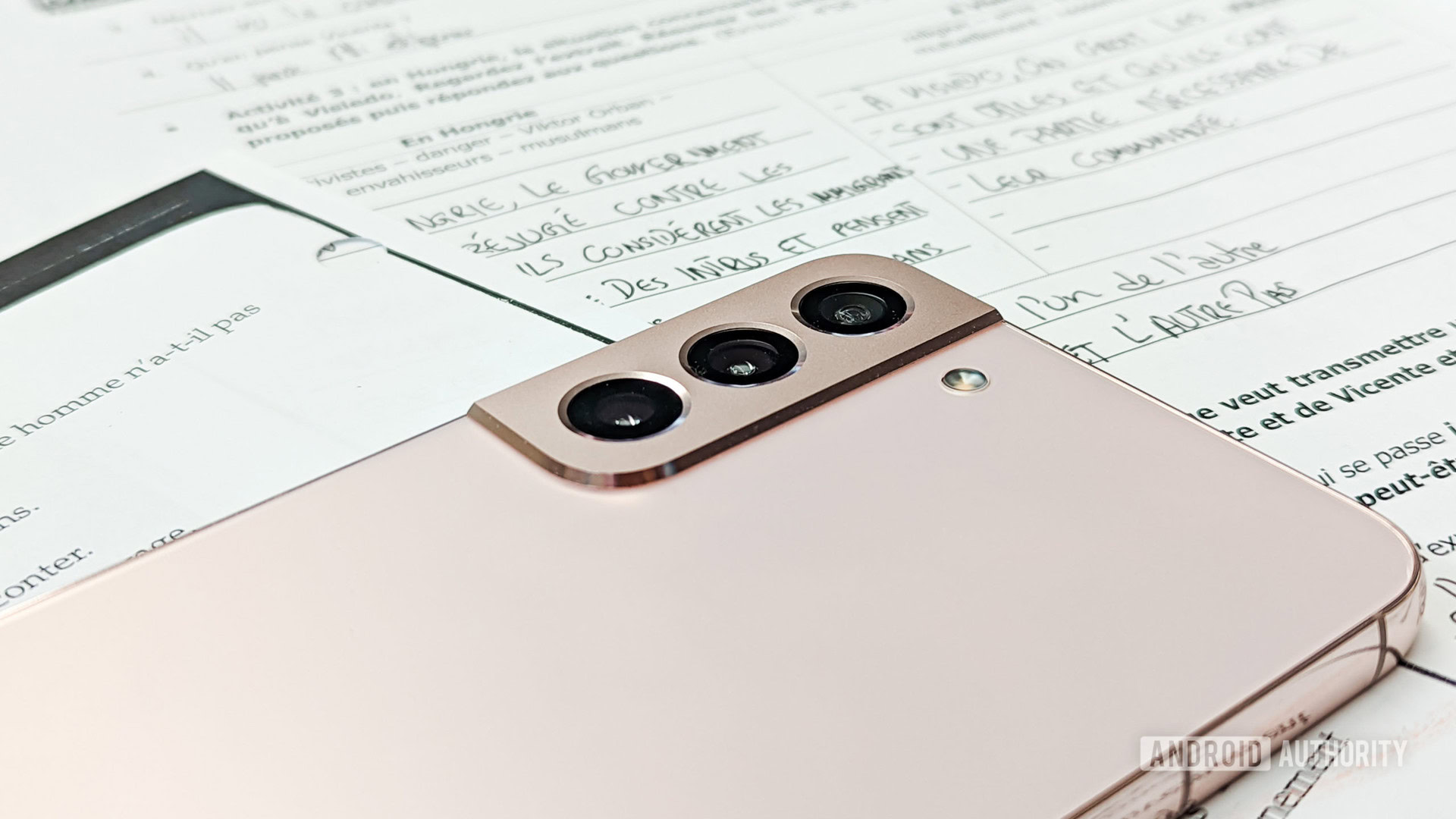
The Pixel 6 Pro carries Google’s first-ever Tensor chip, promising next-level machine learning capabilities to customize the user experience further. Samsung’s S22 Plus has the Snapdragon 8 Gen 1 chipset, which offers four times better AI-based processing and up to 70% better power efficiency than its predecessor. It’s no slouch in the AI department, either. Most of the world sees the Snapdragon variant of the S22 Plus this year, while Europe receives the Exynos 2200 model.
Which performs better? We benchmarked these chips extensively and found that the Snapdragon 8 Gen 1 comes out on top. However, we’ve seen sustained performance issues with this chip, and Samsung is throttling the performance of its phones in some instances. The Exynos 2200 has a slight advantage over the Google Tensor, but neither is a slouch for general performance or more demanding gaming sessions.
Turning to cameras, Google’s Pixel 6 Pro employs a 50MP wide lens, a 12MP ultrawide, and a 48MP 4x telephoto in the camera bar. Around the front, the Pixel 6 Pro carries an 11.1MP selfie shooter. The primary rear camera can shoot 4K video at 60fps, but you’re capped at 30fps for the selfie, ultrawide, and zoom cameras. Google also boasts its Real Tone functionality that fixes the lighting composition on darker complexions.
With the S22 series, Samsung has given the main lens on its Galaxy S22 series a significant bump in the megapixel count. It’s not quite the 108MP monster on the Galaxy S22 Ultra, but the 50MP main sensor is still a noticeable improvement. You’ll also find a 10MP telephoto lens and a 12MP ultrawide option rounding out the rear. As for the selfie camera, Samsung has added a 40MP option. Regarding video recording, the S22 Plus outdoes the Pixel 6 Pro, with its main sensor capturing up to 8K at 24fps and its other cameras capable of recording up to 4K at 60fps.
Both phones take great photos, but the S22 Plus offers more powerful video options.
Regarding real-world tests, it’s tough to call one better than the other, but you should consider some general takeaways. If you’re buying one of these devices for video, the Samsung Galaxy S22 Plus outperforms the Pixel 6 Pro in terms of consistency and resolution. Both take exceptionally great shots when it comes to photos, but each has inconsistencies in critical areas. For the Pixel, it tends to over-sharpen faces in specific lighting scenarios, while the Galaxy S22 Plus tends to oversaturate brighter colors.
Samsung did introduce a better portrait mode, and it’s almost scary how good of a job it does at isolating individual hair strands. But remember that it’s mostly software-based for both phones and can miss things with complex backgrounds. The S22 Plus completely missed the focus on my friend’s face during my testing, while the Pixel struggled to isolate her hair from the background. One major annoyance of the S22 Plus camera experience is the shutter lag; the shutter on the S22 Plus was noticeably slower than the Pixel 6 Pro and even previous Galaxy devices; I hope that’s an issue Samsung addresses in a future update.
Onto charging, Google added its largest battery yet to the Pixel 6 Pro — a solid 5,003mAh cell. It boosted the charging, too, capable of wired speeds up to 23W (despite the advertised 30W). The Pixel 6 Pro is Google’s first device to adopt the USB Power Delivery PPS charging standard to reach its top speeds. As for wireless charging speeds, the Pixel 6 Pro can handle up to 23W, matching its wired speeds.
Although both devices are pretty similar in size, the Pixel 6 Pro offers a significantly bigger cell than the S22 Plus. The Galaxy S22 Plus awkwardly steps down to a smaller battery than its predecessor, from 4,800mAh on the S21 Plus to 4,500mAh. Regarding charging speeds, the S22 Plus can charge up to 45W, but, like the Pixel, you’ll need a USB PD PPS-enabled charger. It’ll also hit 15W on a wireless charging pad. Unsurprisingly, neither company provides a charging brick in the box.
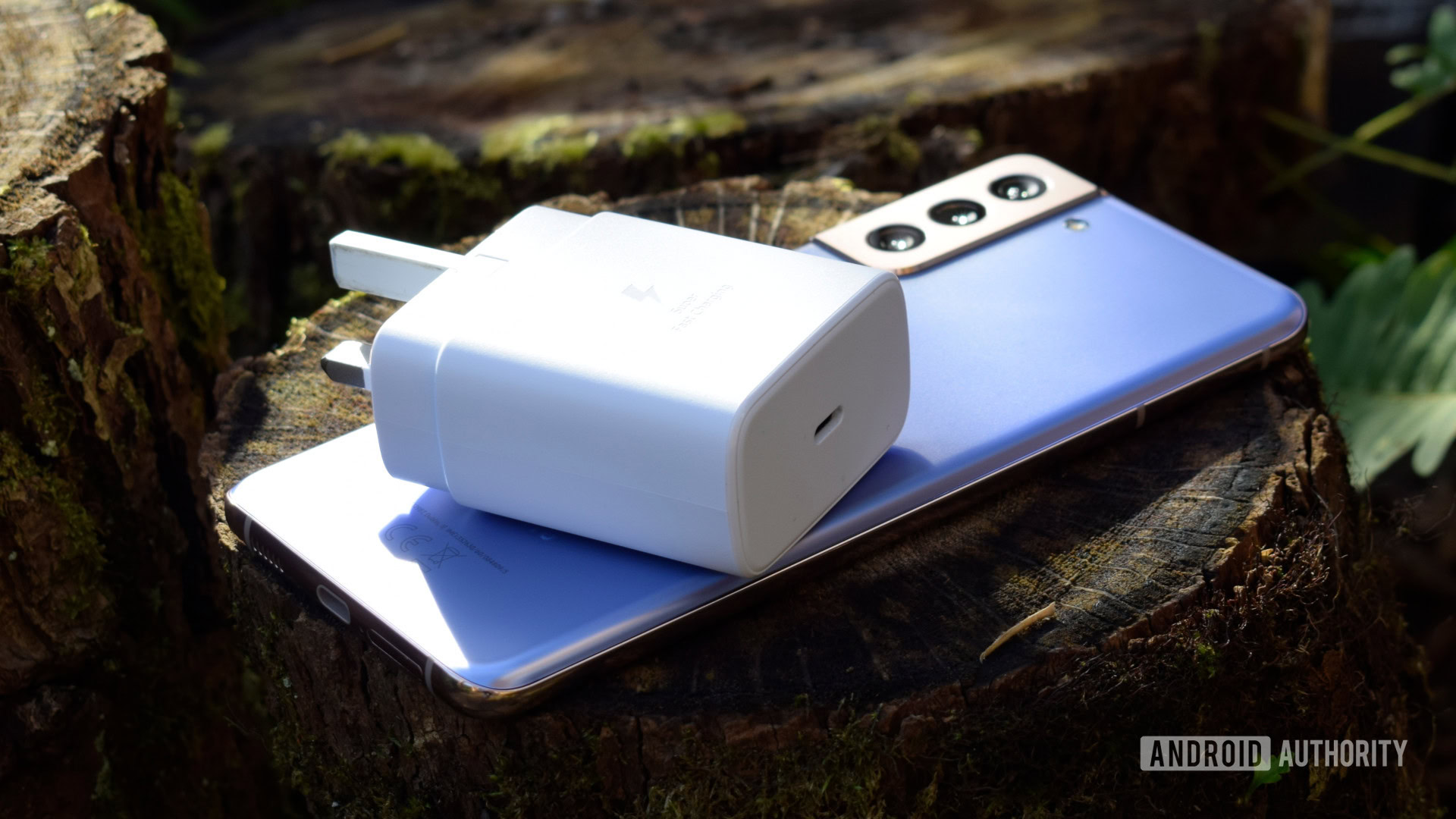
Having tested both phones extensively for about two weeks, I think the Pixel 6 Pro has the longest-lasting battery life of the two devices. The larger battery of the Pixel 6 Pro means you can comfortably use the device into the next day before needing to find a charger, whereas, on the Galaxy S22 Plus, you’re likely charging it by the end of the day. This isn’t to say the S22 Plus offers terrible battery life — you’re still ending the day with around 20—25% with casual to heavy use.
When it did come time for charging, I ran into a weird scenario — neither phone benefitted greatly from their purported faster charging capabilities. During my testing, the S22 Plus charged quickest with the 45W charger, but the difference between it and my old 15W Samsung Fast Charger was only 10 minutes. We’ve spotted a similarly marginal difference in a previous Pixel 6 Pro charging test. There’s just a 10-minute improvement moving from an old 18W USB PD to a new 30W USB PD PPS charger. Even so, depending on your charger, both phones will go from empty to full in an hour to an hour and a half.
Both phones rely on USB PD PPS to charge at top speeds, but neither is remarkably swift to fill up.
The Samsung Galaxy S22 Plus and the Google Pixel 6 Pro also support reverse wireless charging for accessories and other phones, and they can do so at the same wattage of 5W.
Samsung Galaxy S22 Plus vs Google Pixel 6 Pro: Pricing
- Samsung Galaxy S22 Plus (8/128GB): $999
- Samsung Galaxy S22 Plus (8/256GB): $1,049
- Google Pixel 6 Pro (12/128GB): $899
- Google Pixel 6 Pro (12/256GB): $999
- Google Pixel 6 Pro (12/512GB): $1,049
The Pixel 6 Pro was among the most competitive flagships of its time. At $900, you’re arguably getting one of the most capable smartphones from 2021, and it saved you $100—200 compared to comparable devices. Even at the equivalent price of $1,000, you’re getting double the storage at 256GB and 4GB of extra RAM on the Pixel 6 Pro compared to the S22 Plus’ 128GB of storage and 8GB of RAM. To Samsung’s credit, the company has kept its pricing consistent with the S21 generation.
It’s important to know that these MSRP prices no longer matter much, though. Because both the Pixel 6 Pro and the Samsung Galaxy S22 Plus have seen two successors, you can get both devices heavily discounted. We’ve seen the Pixel 6 Pro for as low as about $200, renewed. The Galaxy S22 Plus can go for as low as approximately $350 in the same state. This means you can get both at steep discounts, but the Pixel 6 Pro might be a better deal now.
Samsung Galaxy S22 Plus vs Google Pixel 6 Pro: Specs
| Google Pixel 6 Pro | Samsung Galaxy S22 Plus | |
|---|---|---|
Display | Google Pixel 6 Pro 6.7-inch OLED 19.5:9 aspect ratio QHD+ resolution (3,120 x 1,440) 120Hz adaptive refresh rate HDR10+ support | Samsung Galaxy S22 Plus 6.6-inch Dynamic AMOLED 19.5:9 aspect ratio FHD+ resolution (2,340 x 1,080) 120Hz adaptive refresh rate (10Hz to 120Hz) HDR10+ support |
Processor | Google Pixel 6 Pro Google Tensor | Samsung Galaxy S22 Plus Global: Snapdragon 8 Gen 1 EU, UK: Exynos 2200 |
RAM | Google Pixel 6 Pro 12GB | Samsung Galaxy S22 Plus 8GB |
Storage | Google Pixel 6 Pro 128, 256, or 512GB No microSD card support | Samsung Galaxy S22 Plus 128 or 256GB No microSD card support |
Power | Google Pixel 6 Pro 5,000mAh (typical) 23W wired charging 23W wireless charging No charger in box | Samsung Galaxy S22 Plus 4,500mAh 45W wired charging 15W wireless charging No charger in box |
Cameras | Google Pixel 6 Pro REAR: - 50MP wide, 1.2 μm, ƒ/1.85, 82-degree FoV 1/1.31-inch sensor OIS and EIS - 12MP ultra-wide, 1.25 μm, ƒ/2.2, 114-degree FoV - 48MP telephoto, 0.8 μm, ƒ/3.5, 23.5-degree FoV, 1/2-inch sensor, 4x optical zoom, OIS and EIS - Laser AF FRONT: - 11.1MP, 1.22 μm, ƒ/2.2, 94-degree FoV | Samsung Galaxy S22 Plus Rear: - 50MP wide, 1.0μm, ƒ1.8, 23mm, 85-degree FoV, OIS - 12MP ultra-wide, 1.4μm, ƒ2.2, 13mm, 120-degree FoV - 10MP telephoto, 1.0μm, ƒ2.4, 69mm, 36-degree FoV, 3x optical zoom, OIS Front: - 40MP, ƒ2.2, 23mm, 80-degree FoV |
Video | Google Pixel 6 Pro Rear: 4K at 30/60FPS 1080p at 30/60FPS Front: 4K at 30FPS 1080p at 30/60FPS | Samsung Galaxy S22 Plus Rear: - 8K at 24fps (main lens only) - 4K at 60fps (all lenses) Front: - 4K at 60fps |
Audio | Google Pixel 6 Pro Stereo speakers Triple mics No 3.5mm port | Samsung Galaxy S22 Plus Stereo speakers Dolby Atmos support No 3.5mm port |
Connectivity | Google Pixel 6 Pro 5G (mmWave in NA + Sub6) Wi-Fi 6E (802.11ax) Bluetooth 5.2 NFC support Ultra-wideband support (UWB) | Samsung Galaxy S22 Plus 5G (mmWave + Sub6) Wi-Fi 6E (6GHz) Bluetooth 5.2 NFC support Ultra-wideband support (UWB) |
Security | Google Pixel 6 Pro In-display fingerprint Titan M2 chip 5 years security updates | Samsung Galaxy S22 Plus Ultrasonic under-display fingerprint sensor 5 years security updates |
Software | Google Pixel 6 Pro Android 12 Pixel UI | Samsung Galaxy S22 Plus Android 12 One UI 4.1 |
Materials | Google Pixel 6 Pro Gorilla Glass Victus front and back | Samsung Galaxy S22 Plus Gorilla Glass Victus Plus front and back Armour Aluminum frame |
Durability | Google Pixel 6 Pro IP68 certified | Samsung Galaxy S22 Plus IP68 certified |
Dimensions and weight | Google Pixel 6 Pro 163.9 x 75.9 x 8.9mm 210g | Samsung Galaxy S22 Plus 157.4 x 75.8 x 7.6mm 196g |
Colors | Google Pixel 6 Pro Stormy Black, Cloudy White, Sorta Sunny | Samsung Galaxy S22 Plus Phantom Black, Phantom White, Green, Pink Gold |
Samsung Galaxy S22 Plus vs Google Pixel 6 Pro: Which should you buy?
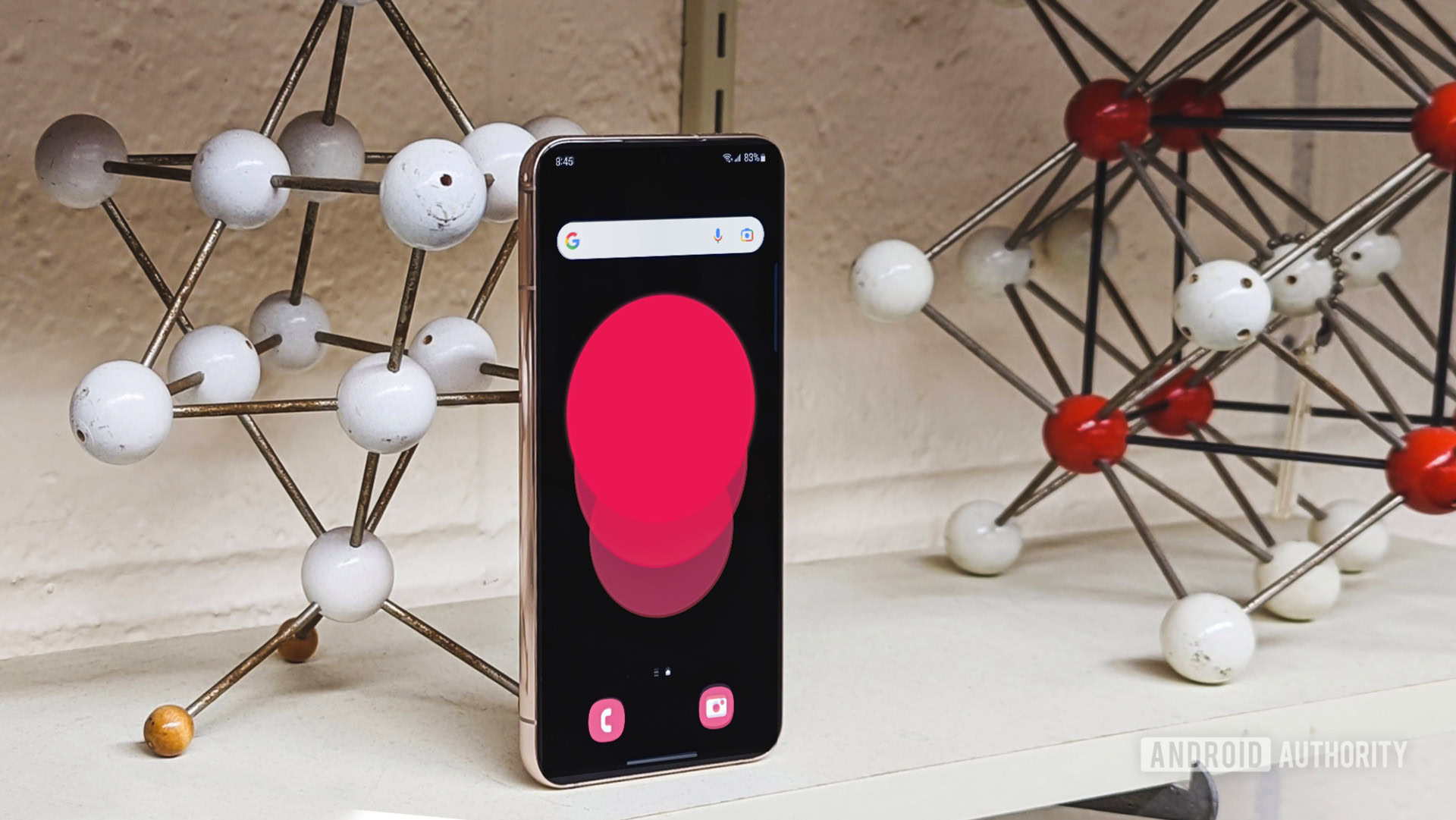
When looking at these phones side by side, it can be challenging to pick one definite winner; it all comes down to what you need from a smartphone. One main takeaway from this comparison is that the Samsung Galaxy S22 Plus and the Google Pixel 6 Pro are devices aimed at the same market, with two completely different goals. The Galaxy S22 Plus aims to refine and improve upon the success of the S21 series through new camera upgrades and a new processor. The Pixel 6 Pro aims to communicate that Google finally got serious about flagship smartphones and showcases this sentiment through a radical new redesign paired with Google’s own chipset.
Pick the Pixel 6 Pro for its excellent combination of design, camera performance, and software features.
On the Google side, the Pixel 6 Pro is an exceptional phone that brought Google’s vision of a flagship to life, and did so with a sleek and robust profile. With the Pixel 6 Pro, Google united its software and hardware expertise to manifest its ambitions as a prominent competitor in the smartphone market. This device is an excellent combination of design, camera performance, and software features that genuinely make using this phone enjoyable.
With that said, introducing so many new things to one device meant it inevitably suffered from a lack of refinement in certain regards. For the Pixel 6 Pro, this came in the form of software bugs. Whether minor things like occasional hangs or severe issues like dropping calls, Google had some issues making the software experience reliable on its Tensor platform. These issues have mostly been fixed since the device’s launch, though.
On the Samsung side, it’s a different story. The Galaxy S22 Plus embodied the saying, ‘if it ain’t broke, don’t fix it,’ and Samsung did a great job not messing up what it got right with the S21 Plus the year before. You’re getting incremental updates in the right places on this phone, like a new 50MP sensor, an upgraded chipset, and software reliability that rivaled that of Google. Samsung’s update policy was amazing then, and it meant the Galaxy S22 series would receive software updates longer than any other phone on the Android side, including the Pixel 6 Pro. Samsung promised up to four years of Android updates and five years of security updates for the S22 series, which had been unheard of in the Android market.
Samsung's 'if it ain't broke, don't fix it' approach keeps the Galaxy S22 Plus an outstanding all-rounder.
The Galaxy S22 Plus can’t seem to shake off its middle-child quirks, though. While the Galaxy S22 Plus improvements provided a significant upgrade to anyone buying it, the phone still feels like it’s holding back what it could be to upsell buyers to the more expensive S22 Ultra. Things like the 1080p screen, smaller battery, and limited memory/storage combinations meant that at $1,000, you were paying more for the reliability and familiarity of the S22 Plus rather than the technical improvements it has over its predecessor.



Which device won our Galaxy S22 Plus vs. Pixel 6 Pro battle?
FAQs
The Samsung Galaxy S22 Plus features a more refined design than the Galaxy S21 Plus, with flattened back glass and sides, but still keeping the contoured camera bump. In contrast, the Google Pixel 6 Pro features a brand-new design with a camera bar spanning the entire width of the phone. Both phones have expansive AMOLED displays with centrally mounted punch hole cameras, but the Pixel 6 Pro offers a sharper QHD display with a curved panel, while the S22 Plus has a flat panel with FHD+ resolution.
The Pixel 6 Pro carries Google’s first-ever Tensor chip. At the same time, the S22 Plus has the Snapdragon 8 Gen 1 chipset, which offers four times better AI-based processing and up to 70% better power efficiency than its predecessor. Regarding cameras, the Pixel 6 Pro features a 50MP wide lens, a 12MP ultrawide, and a 48MP 4x telephoto in the camera bar, with an 11.1MP selfie shooter. The S22 Plus has a 50MP primary sensor, a 10MP telephoto lens, and a 12MP ultrawide option, with a 40MP selfie camera. The S22 Plus outperforms the Pixel 6 Pro regarding video recording capabilities, but both phones take exceptionally great shots.
The Pixel 6 Pro has a larger battery of 5,003mAh, which provides longer-lasting battery life than the S22 Plus. Both phones support wired charging speeds up to 23W and wireless charging up to 23W, but the S22 Plus can charge up to 45W with a USB PD PPS-enabled charger. The Pixel 6 Pro also supports reverse wireless charging for accessories and other phones at 5W.
The Samsung Galaxy S22 Plus (8/128GB) is priced at $1,000, while the (8/256GB) version costs $1,050. On the other hand, the Google Pixel 6 Pro is priced at $900 (12/128GB), $1,000 (12/256GB), and $1,050 (12/512GB). Compared to the S22 Plus, the Pixel 6 Pro offers more storage and RAM at a comparable price point.
Both phones offered unique features and targeted different markets. The Pixel 6 Pro is an exceptional phone that showcases Google’s vision of a flagship smartphone and offers a sleek and robust profile. The S22 Plus was a refinement of the well-received S21 series, with new camera upgrades and an upgraded chipset. The Pixel 6 Pro offers longer-lasting battery life, while the S22 Plus outperforms in terms of video recording capabilities. Ultimately, the choice comes down to personal preference and priorities.